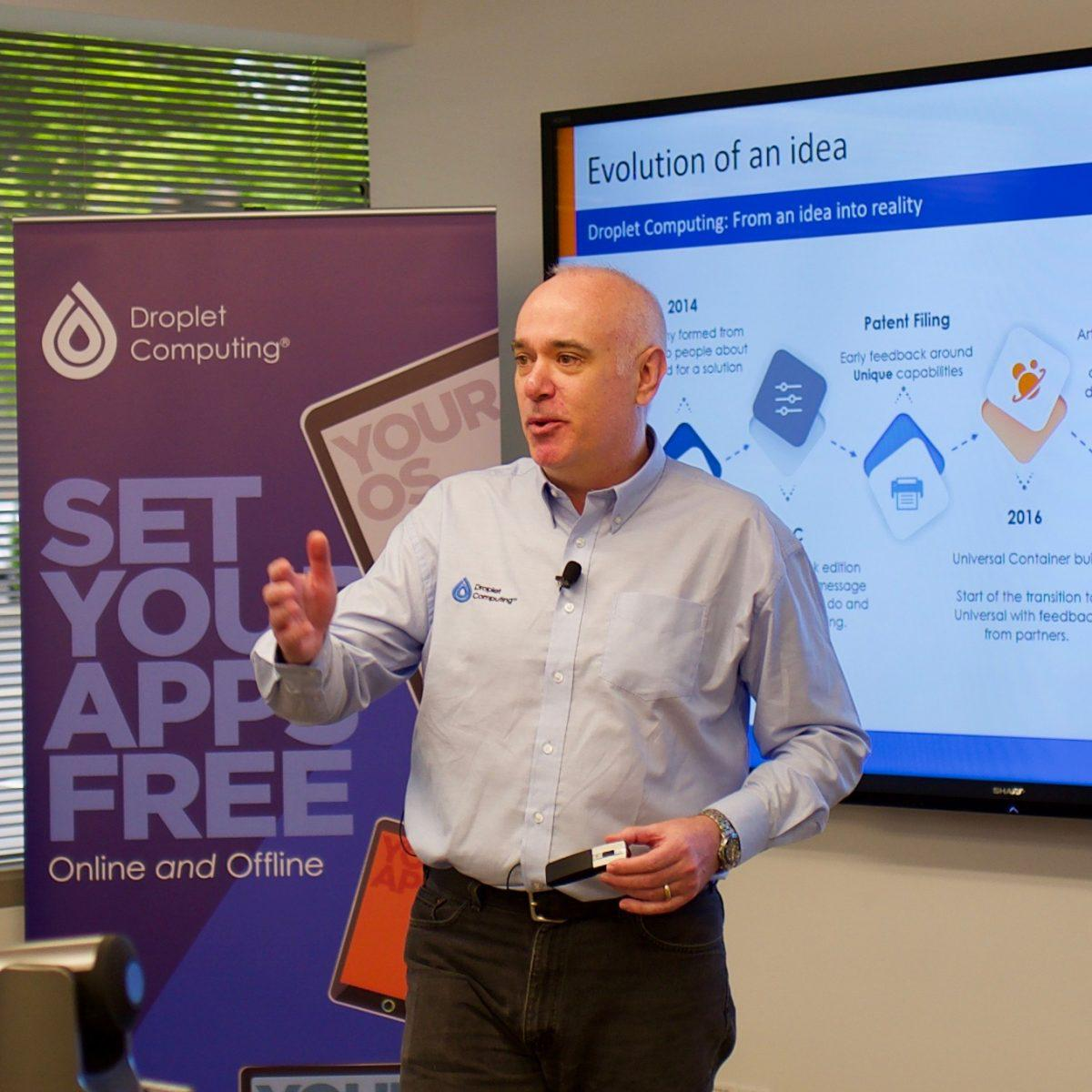Droplet Computing Makes The Browser The Computer
Droplet Computing has developed an intriguing way to run old applications inside a modern web browser.
Droplet uses a thing called WebAssembly, which treats the browser like a kind of chip architecture similar to x86 or ARM… or the Java Virtual Machine. WebAssembly turns the browser into a computer that you can write code for just as if it were a physical computer or virtual machine. Combined with other browser-based techniques like WebGL and WebUSB, the browser is fast becoming the operating system of the cloud era.
Droplet has built upon the idea of WebAssembly and created a just-in-time compiler that converts applications written for older operating systems into WebAssembly code on the fly. It's a lot like Java, but instead of needing a very specific version of the Java Virtual Machine installed ahead of time (and all the problems that has caused over the years), WebAssembly is available right now in the four major browsers: Chrome, WebKit, Edge, and Firefox.

The promise of Java was write once, run anywhere software, yet it never quite happened, but that's the potential that Droplet Computing conjures in my mind.
This creates a host of intriguing ideas, and Droplet is looking at some of them as potential markets for the technology it's developed.
One of the ideas is to use the browser as a kind of virtual machine in the way VMware turned physical hardware into a place to host multiple virtual machines. One of the early uses for this mechanism was to run older operating systems on new hardware. Think Windows NT3.51 on hardware that wasn't out of support.
Why do this? Because of old applications. The applications were important for various business reasons, but they were written for a specific target operating system. The applications didn't work on newer operating systems, but rewriting them wasn't viable for a variety of reasons: no source code, no money for the development effort, etc. But the old operating systems often had trouble running on newer hardware.
To this end, VMware was a godsend. Instead of re-platforming the apps before the obsolete hardware wore out, the operating system could be migrated to virtual hardware running in the VMware hypervisor. Then the system could keep running, happily abstracted away from the physical world.
Do you see where this is going?
The world is currently full of custom-built applications written for obsolete operating systems. There are MRI machines that depend on an attached Windows XP system in order to function. Millions of dollars of equipment would become useless without that old, unpatched, insecure hunk of anachronistic computer attached to it. Lift up the rug of healthcare and educational computing and you will find all manner of problems swept under there.
Problems that become just a little more tractable with what Droplet Computing are proposing.
In talking to the Droplet Computing team during Cloud Field Day 3, I, and several of my colleagues, raised concerns about security: wouldn't prolonging the life of these older systems preserve the attack surface of bugs? Would running XP in the browser create an attactive new back door into the enterprise? Or would we be improving the situation by limiting these applications to a well contained browser sandbox environment?
But we need to also balance this against the fact that these systems already exist and will continue to exist, but in a far less manageable form. Browsers are under active development in an actively hostile security environment, so they are a more robust hosting location than many old operating systems that no longer receive patches. Depending on how they connected to the rest of the organisation, virtualising these ancient systems into a browser process might actually be an improvement.
There are other potential markets: Chromebooks are already popular for education settings, and budgets for rewriting old Windows based apps are tight. Providing something that can be used may be better than nothing at all, and the security posture of cash-strapped schools may actually be improved by in-browser delivery.
It's very early for WebAssembly as a technology, so we're still discovering what might be possible with clever applications of the approach. Droplet seems to be somewhat of a solution hunting for a problem (and a market) at this stage, but there are problems out there that this could be a solution for, and I can see some quite attractive markets building up around them.
Personally, I'd like to return to the peaceful productivity of WordPerfect5.1 and Lotus 1-2-3R3, but that's probably just nostalgia talking.
I attended Cloud Field Day 3 as a guest of GestaltIT and was not paid for my time. You can read my disclosure post about the event here.
This article first appeared in Forbes.com here.
